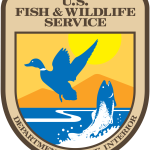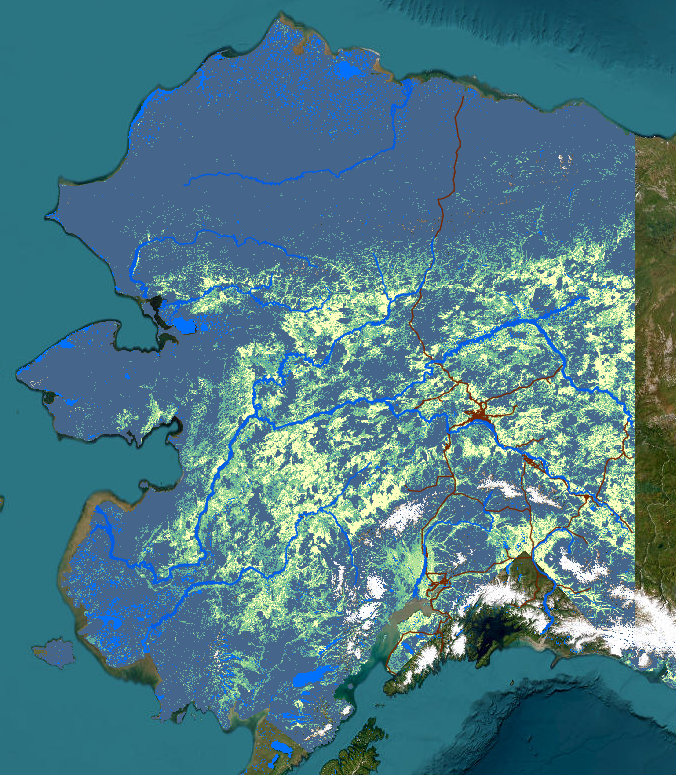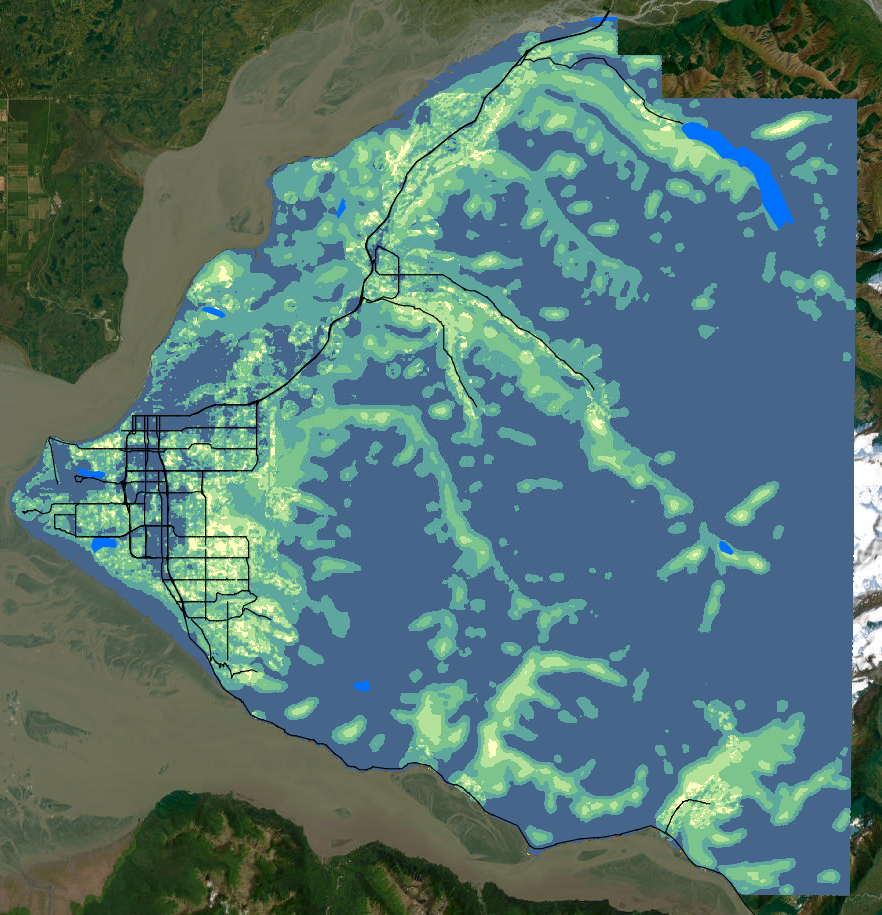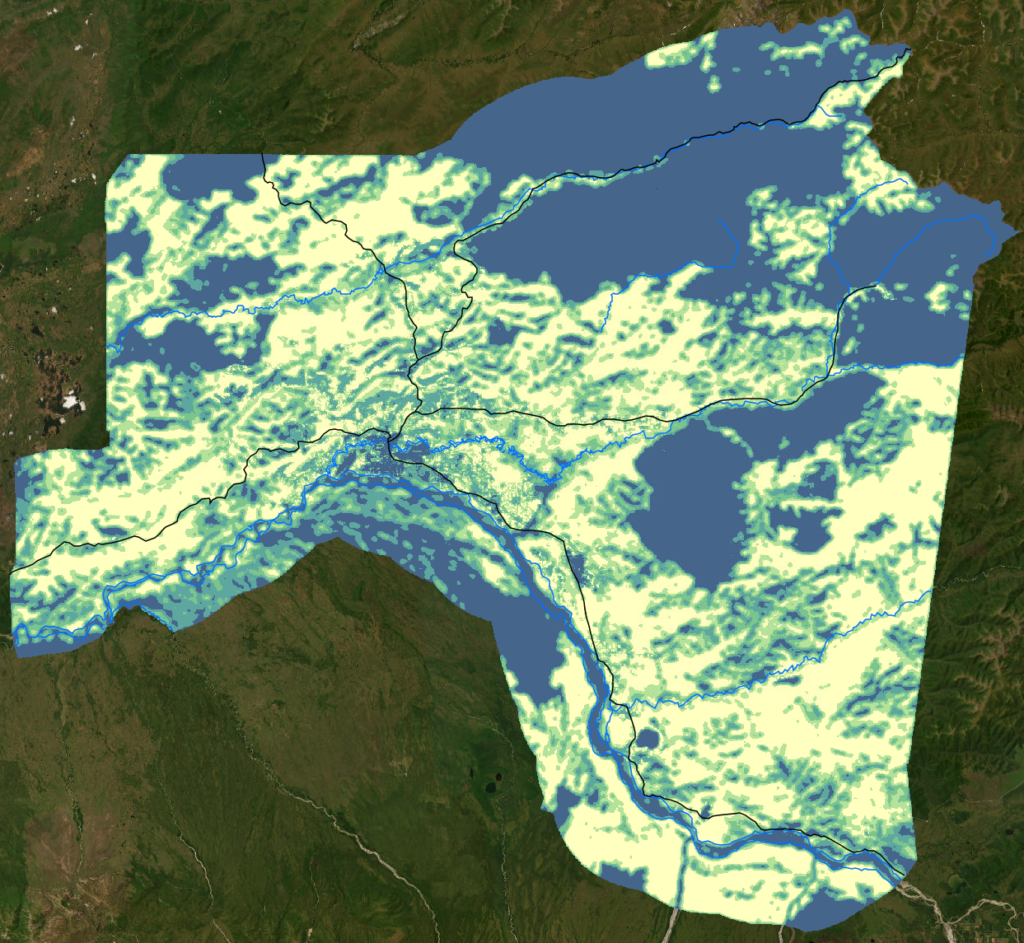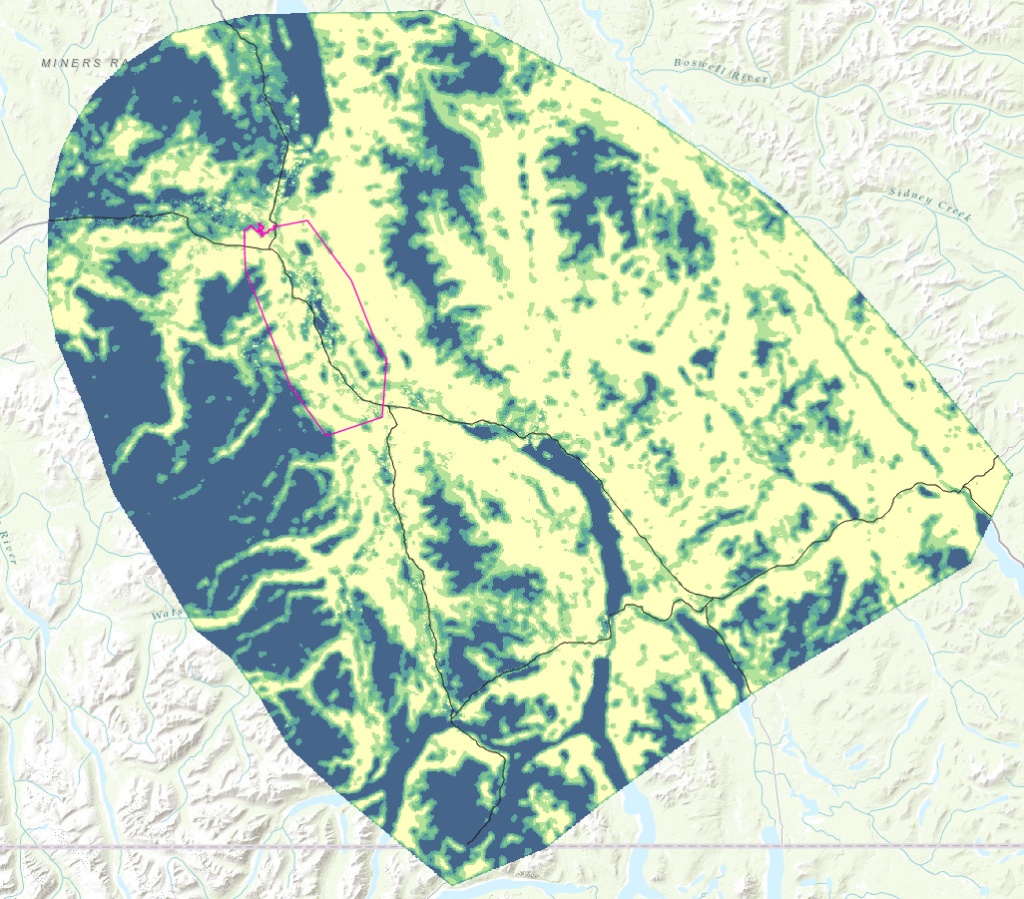Why is there a need for a locally developed product?
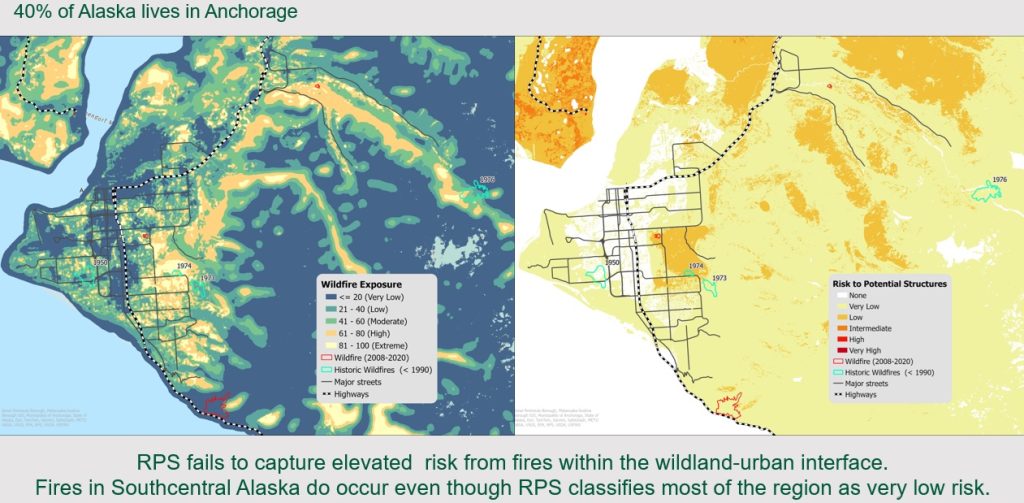
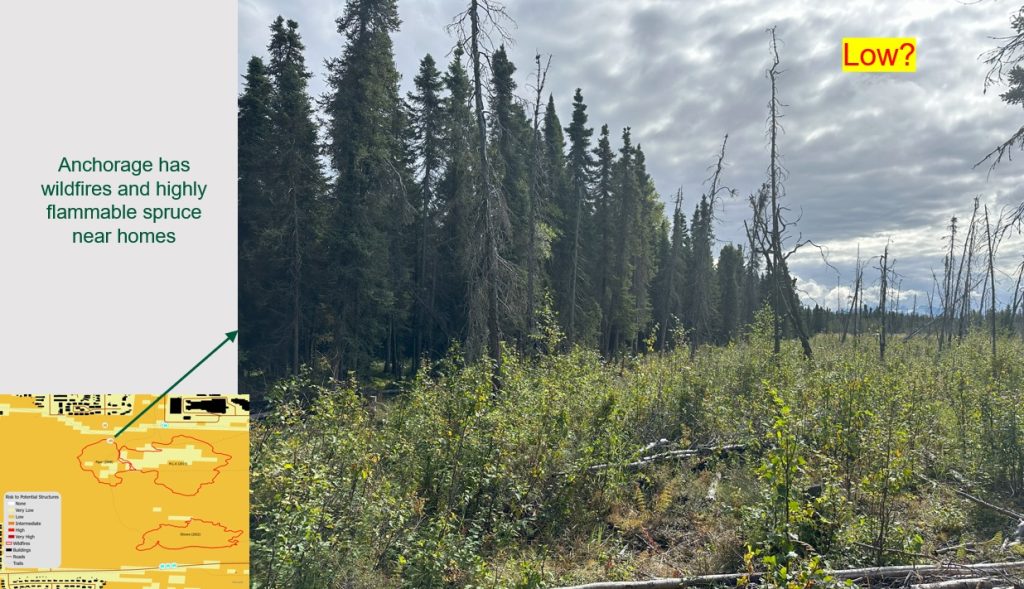
What is Wildfire Exposure?
Wildfire exposure represents the likelihood that wildfire will get to and impact a location. Exposure is increased where accumulations of elevated flammability hazard are found. Range: 0-100
What is flammability hazard?
This is also called Hazardous Fuel. This is vegetation that has the potential to cause damage, loss, or harm to people, infrastructure, equipment, natural resources, or property due to its flammability (i.e. short and long-range ember spotting and intense burning). Range: 0-100
The tools and techniques applied and evaluated here are collectively called Wildfire Exposure Assessment, a process developed and published by Jennifer L. Beverly (University of Alberta) and others.
Please see the technical report on the Wildfire Exposure approach and the article published in Natural Hazards called “Spatial distribution of wildfire threat in the far north: exposure assessment in boreal communities“.
You can also check out our online map for the following regions:
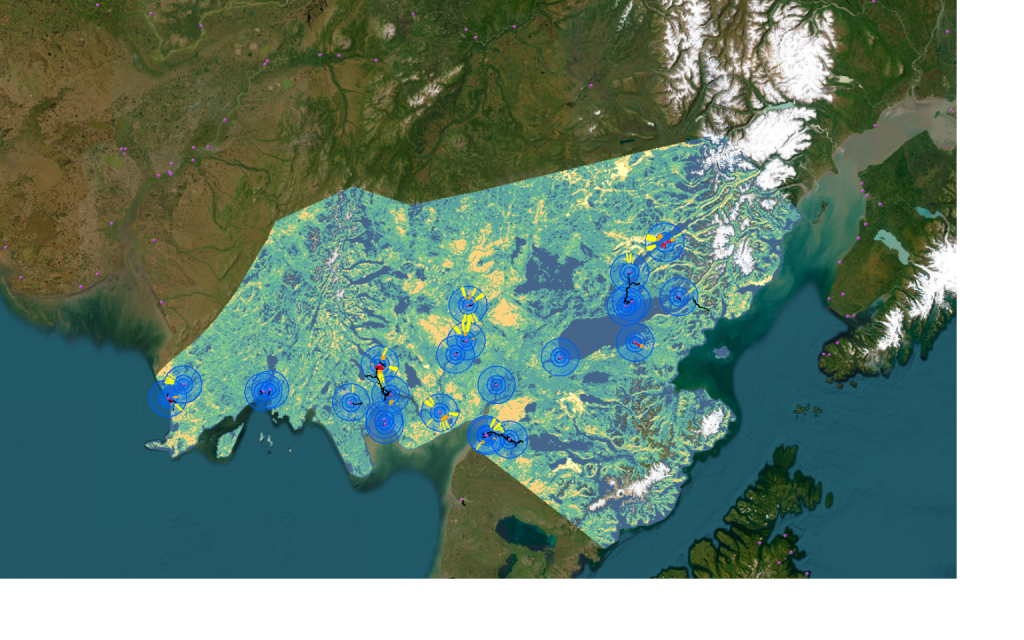
Wildfire Exposure with Tundra: Bristol Bay Region
Check out the app: https://bit.ly/BBNAwildfire
Here we have modified it for Alaska as shown in the figure below.
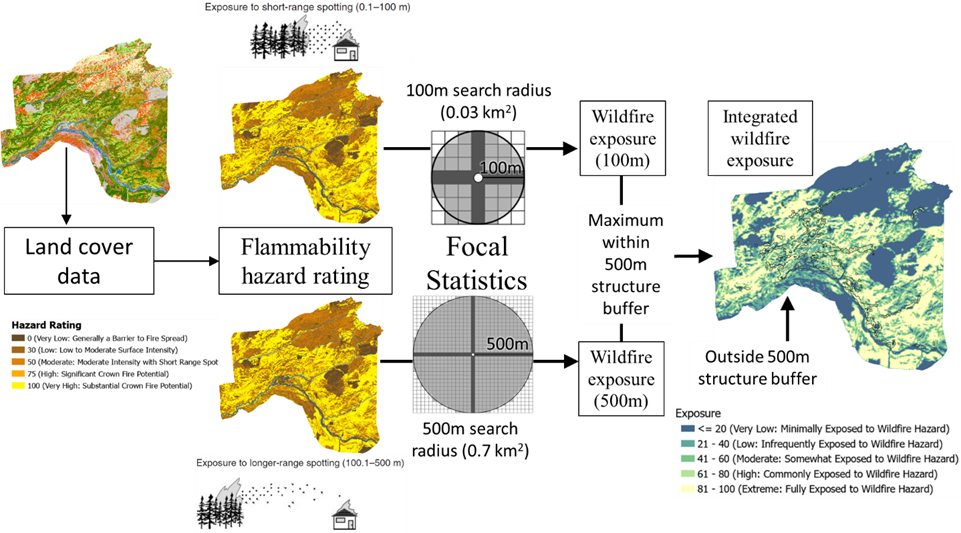
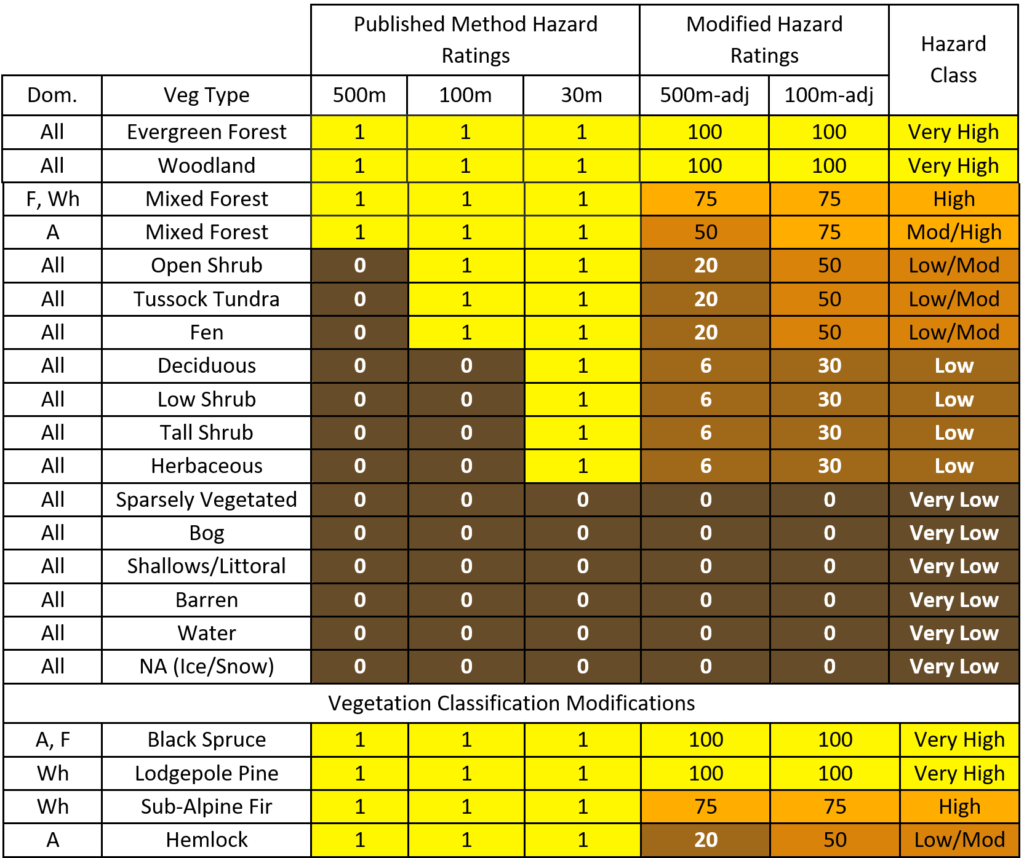
Papers of interest
- Schmidt J.I., Calef M., Varvak A., and Ziel R. (2024) Spatial Distribution of Wildfire Threat in the Far North: Exposure Assessment in Boreal Communities. Natural Hazards. Volume 120, pages 4901–4924. https://link.springer.com/article/10.1007/s11069-023-06365-4
- Ziel R., Schmidt J.I., Calef M., Varvak A. (2024) Mapping the wildfire threat to boreal communities. Available at https://www.frames.gov/catalog/69574
- Schwoerer T., Schmidt J.I., Berman M. Bienik P., Farquharson L.M, Nicolsky D., Powell J., Roberts R., Thoman R., Ziel R. (2023) Nordic homeowners’ mitigation response to multi-hazard climate risk. Ambio, Volume 53, pages 389–405. https://link.springer.com/article/10.1007/s13280-023-01951-z
- Calef M.P., Schmidt J.I., Varvak A., and Ziel R. (2023) Predicting the Unpredictable: Predicting Landcover in Boreal Alaska and the Yukon Including Succession and Wildfire Potential. Forests, 14(8), 1577. https://www.mdpi.com/1999-4907/14/8/1577
- Schmidt J.I., See J. (2023) Advancing Wildfire Preparedness and Planning in Anchorage Wildfire Exposure and Egress Study
- Schmidt J.I., Larson, O. (2023) Report for AK PANOCESU Collaborative Effort to Develop a Statewide Wildfire Exposure Map (L22AC00566)
https://drive.google.com/file/d/15nL5cW40qOX5FD2k3cyN5eEcGVZunT9e/view?usp=drive_link - Alaska Wildfire Exposure Assessment and Fuels Planning in R10. https://drive.google.com/file/d/1hzT-aOCTfSB7AGozTH06RNEY–25gbvn/view?usp=drive_link
Data layers for download
Note, the 2024 layers contain wildfire scars through 2023.
LANDFIRE
Does your community have a pathway of high wildfire exposure?
Check out the online app to see if your community is vulnerable. If you do not see your community there, but want to email me (jischmidt@alaska.edu). This approach is modified from Beverly, J. L., & Forbes, A. M. (2023). Assessing directional vulnerability to wildfire. Natural Hazards. doi:10.1007/s11069-023-05885-3 https://link.springer.com/article/10.1007/s11069-023-05885-3
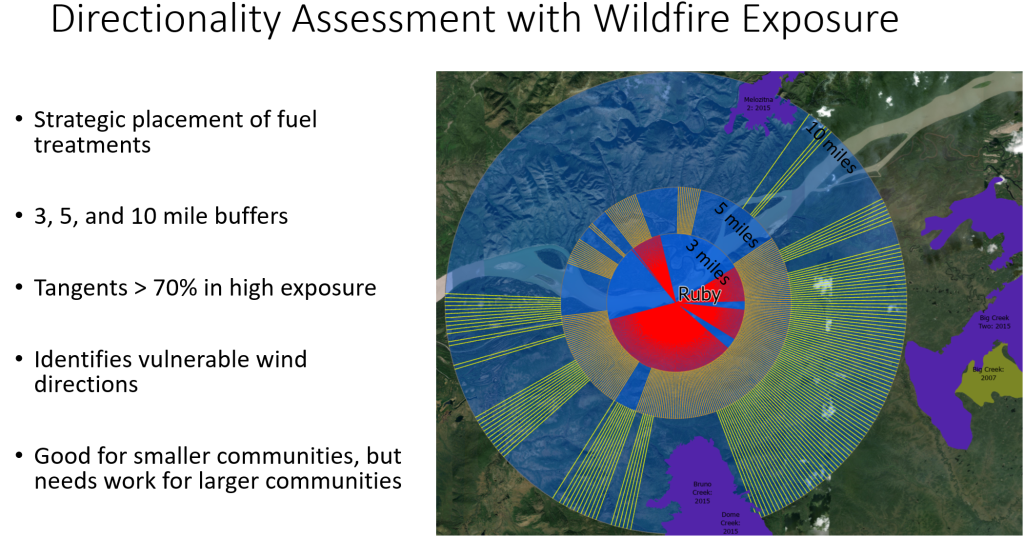
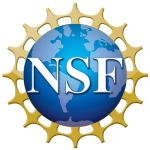

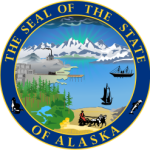
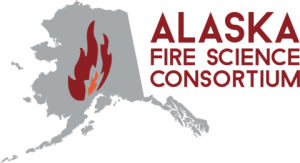
This work would not be possible without the support from many agencies and people. NSF support was provided by the following awards: NNA Track 1: Collaborative Research: Arctic Urban Risks and Adaptations (AURA): a co-production framework for addressing multiple changing environmental hazards. Award Number:1927563; NNA Research: Collaborative Research: Socio-ecological considerations for sustainAble Fuel treatments to Reduce wildfire Risk (SAFRR)
Award Number:212728
